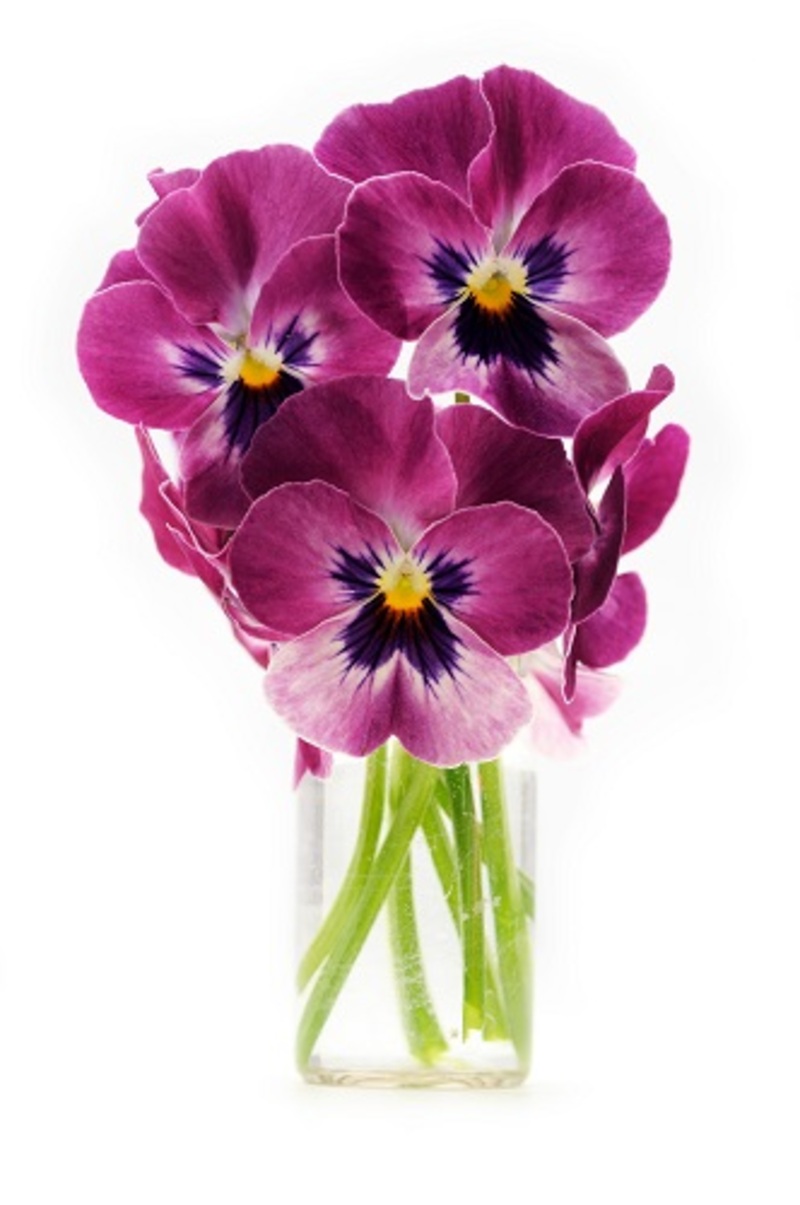The Passionate Gardener's Orchid Care Handbook
Posted on 19/08/2025
The Passionate Gardener's Orchid Care Handbook
Orchids have captivated gardeners for centuries with their dazzling colors, remarkable shapes, and alluring fragrance. While they may appear exotic and delicate, many orchid species are surprisingly resilient and can thrive with proper care. Whether you're a budding enthusiast or a lifelong devotee, this comprehensive orchid care handbook is your gateway to flourishing, healthy orchid blooms. Read on to unlock the secrets of successful orchid gardening!
Why Choose Orchids? The Charm of Cultivation
Orchids are members of one of the largest and most diverse plant families on the planet, the Orchidaceae. With over 25,000 known species and countless hybrids, these botanical marvels offer a kaleidoscope of colors, sizes, and forms. Their adaptability means there's an orchid suited for nearly every environment and every passionate gardener's skill level.
- Longevity: Well-cared-for orchids can live for decades.
- Elegance: Their unique flowers are prized as decorative masterpieces.
- Variety: From robust Phalaenopsis to rare Paphiopedilums, there's an orchid for everyone.
Cultivating orchids is an exercise in patience, observation, and creativity--a perfect harmony for nurturing souls. Let this handbook for orchid care awaken your inner gardener!

Understanding Orchid Basics: Foundations of Care
The Anatomy of an Orchid
Before diving into care routines, it's essential to understand the basic structure of an orchid. Familiarize yourself with these key components:
- Pseudobulbs: Swollen stems that store water and nutrients.
- Leaves: Vary from thick and leathery to thin and delicate based on species.
- Roots: Often aerial and specialized for absorbing moisture from the air.
- Inflorescence: The stalk bearing the flower or cluster of flowers.
- Lip (Labellum): The standout, modified petal that frequently serves as a landing pad for pollinators.
Common Orchid Types for Passionate Gardeners
Some orchids are more popular among hobbyists due to their beauty and relative ease of care:
- Phalaenopsis (Moth Orchid): Excellent for beginners, thriving in home conditions with minimal fuss.
- Cattleya: Known for their large, fragrant blooms and vivid colors.
- Dendrobium: Versatile species with a reputation for resilience and varied appearance.
- Oncidium (Dancing Lady): Characterized by prolific sprays of small, golden flowers.
Creating the Perfect Habitat for Your Orchids
Light Requirements: Nourishing Your Orchids
Light is the lifeblood of successful orchid care. Most orchids prefer bright, indirect sunlight. Direct sun can scorch delicate leaves, while too little light results in weak plants and poor flowering.
- Position Phalaenopsis in an east-facing window for optimal light.
- Cattleya and Dendrobium appreciate slightly stronger light, such as in a south or west window shielded by a sheer curtain.
- Use artificial grow lights in dimmer spaces, adjusting duration and intensity as needed.
Tip: Leaves should be a vibrant green, not yellow (too much sun) or dark green (too little light).
Orchid Temperature & Humidity: Simulating the Tropics
Understanding the temperature and humidity preferences of your orchid species is crucial for healthy growth:
- Phalaenopsis: Enjoys temperatures of 65-80?F (18-27?C) by day and a minimum of 60?F (15?C) at night.
- Cattleya: Prefers similar daytime temperatures but appreciates a slightly cooler nighttime drop.
- Humidity: Orchids thrive in 40-70% relative humidity. Use humidifiers, water trays, or misting routines to elevate dry indoor air.
Keep your orchids away from drafts, air conditioners, and heating vents, as sudden temperature fluctuations can stress your plants.
Potting Media: The Right Foundation
Unlike ordinary houseplants, orchids do not grow in standard soil. Their roots are adapted for air and moisture, making specialty orchid potting mixes essential. Common media includes:
- Bark: Provides excellent airflow and good drainage.
- Sphagnum moss: Retains moisture, ideal for moisture-loving species.
- Perlite, charcoal, coconut husk chips: Added for structure and aeration.
Repotting every 1-2 years keeps media fresh and prevents root rot. Choose pots with drainage holes to ensure roots don't sit in stagnant water.
Orchid Watering Essentials
How Often Should You Water Orchids?
The golden rule: Let the media dry slightly between waterings. Overwatering is the number one killer of orchids. Factors influencing watering frequency include pot material, root type, home humidity, and season.
- Water once per week for most orchids; more often in heat/humidity, less in cool/dry conditions.
- Insert a wooden skewer or finger into the potting mix; water when almost dry, but not bone dry.
Use room temperature, non-softened water. Rainwater or distilled water is ideal, as tap water can contain minerals that build up in the media.
Mistakes to Avoid When Watering Orchids
- Don't allow roots to stand in water. Always empty saucers after watering.
- Avoid watering the crown (the plant's center); standing water here can cause rot.
- Never water on a schedule alone. Pay attention to your plant's unique needs.
Feeding Your Orchids: Fertilization Secrets
Orchids have relatively low nutrient needs compared to many other plants--but supplemental feeding is important for prolific growth and lush blooms.
- Use a balanced, water-soluble orchid fertilizer (20-20-20) for general care.
- Apply "weakly, weekly": one-quarter to half-strength fertilizer with each weekly watering.
- Flush the pot with clear water once a month to prevent fertilizer salt buildup.
- During active growth (spring/summer), regular feeding is best. Reduce in winter when growth slows.
*Tip: Avoid direct contact between fertilizer and roots or leaves to prevent burns.*
Repotting Orchids Like a Pro
Repotting is essential in your orchid gardener's handbook. It prevents media breakdown, halts disease, and ensures the roots have space to grow.
Signs Your Orchid Needs Repotting
- Roots protruding over the pot's edge or escaping from drainage holes
- Potting mix decomposed, compacted, or retaining water
- Noticeable decline in plant vigor or leaf/yellowing
Repotting Steps
- Choose the right time: Shortly after blooming is ideal, allowing plants time to recover.
- Remove the old pot: Gently squeeze the pot to loosen it, then tease roots free.
- Trim dead roots: Use sterile scissors to remove mushy or blackened roots.
- Install in fresh mix: Center the orchid in an appropriately sized pot, working new mix around the roots.
- Don't water immediately: Wait a day or two after repotting to let any damaged roots callous over.
Pest and Disease Defense for the Orchid Enthusiast
Orchids, while resilient, are vulnerable to certain pests and diseases. Early detection and swift action keep your collection healthy and beautiful.
Common Orchid Pests
- Scale: Bumps along undersides of leaves or stems; treat by scrubbing with soapy water and horticultural oil.
- Mealybugs: White, cottony clusters. Remove by dabbing with rubbing alcohol and rinsing the plant.
- Spider Mites: Fine webbing and stippling. Increase humidity and use miticides if needed.
- Aphids: Found on flower spikes and new growth. Spray off with water or treat with insecticidal soap.
Frequent Orchid Diseases
- Root Rot: Caused by overwatering. Remove rotted roots, repot, and adjust watering practices.
- Leaf Spots and Fungal Infections: Improve air circulation and remove affected leaves.
- Bacterial Soft Rot: Often fatal; isolate and destroy infected plants.
Prevention is key: Always use sterile tools, quarantine new acquisitions, and monitor for changes.
Expert Tips for Blooming Success
- Provide a short, cool period in the autumn to trigger winter blooming varieties.
- Support heavy flower spikes with stakes and clips to prevent breakage.
- Prune spent spikes (except for Phalaenopsis, which may rebloom from old stems).
- Be patient: Some orchids bloom only once per year, but the display is worth the wait!
Frequently Asked Questions: Your Orchid Handbook Answers
Why are my orchid leaves wrinkled or limp?
- This is often a sign of improper watering--either too much or too little. Check roots for rot or dryness, and adjust watering habits accordingly.
How do I get my orchid to rebloom?
- Give adequate light, and, for many types, a short period of cooler night temperatures.
- Keep to a regular feeding and watering schedule--healthy, unstressed plants are more likely to bloom again.
Is it normal for orchid roots to grow outside the pot?
- Yes! These aerial roots collect moisture from the air. As long as they appear plump and white/green, they are healthy.
Orchid Care Handbook: Troubleshooting Table
| Problem | Likely Cause | Solution |
|---|---|---|
| Yellowing leaves | Overwatering, old age, insufficient light | Adjust watering routine; provide more light |
| No blooms | Low light, improper temperature, nutrient deficiency | Increase light, give cooler nights, fertilize |
| Root rot | Wet media, poor drainage | Repot, use fresh media, empty saucers |
| Leaf spots | Fungal/bacterial infection | Remove affected leaves, increase airflow |

Embracing Orchid Diversity: Specialty Care
Unusual and Rare Orchids
For adventurous orchid gardeners, the world of rare species--like Lady's Slipper or Ghost Orchid--offers unique rewards, but their care is precise:
- Research your species: Each has distinct needs for light, water, temperature, and even pollinators.
- Replicate their natural habitat: Specialty terrariums or greenhouses may be needed for humidity-loving orchids.
- Be patient and observant: Success with rare orchids comes from learning and adapting over time.
Final Thoughts: The Joy of Passionate Orchid Gardening
Orchid care is a journey--one of growth, learning, and unending fascination. By following the guidance in this Orchid Care Handbook, you are well on your way to conquering the mysteries of these alluring plants. Enjoy their sumptuous blooms, experiment with new varieties, and allow your love for these enchanting flowers to flourish.
Remember: The best orchid gardeners are those who observe closely, adapt gladly, and share their devotion with others. Happy growing, and may your home always be filled with the beauty of thriving orchids!
Latest Posts
Understanding the Symbolism and Colors of Peony Flowers
Innovative Ways to Keep Your Poinsettias Flourishing
Lovers' Language: Red Roses on Valentine's Day
The Passionate Gardener's Orchid Care Handbook
Find Out Which 12 Long-Lasting Flowers Will Brighten Your Day





